On Saturday, August 3, I got up early and after breakfast pointed my faithful gray Chevrolet Aveo north. Jerash is only about 80 km from Madaba, just over an hour's drive. I went in the morning because I wanted to miss the heat of the day, this being August in a desert country on or about the 30th parallel. Following the advice of The Rough Guide to Jordan, I parked my car in the free lot just to the south of Hadrian's Arch, wandered over to the entrance and through the pseudo-souk to the ticket window. After paying my 8 JD entrance fee, I was free to wander within the limits of the Jerash Archeological Park.
The first thing I saw on arriving was Hadrian's Arch, an imposing monumental structure built in the 2nd century. At the time, the plan was to extend the walls of the city all the way to the arch, but over the next hundred or so years, it became obvios that the city did not have the money for the expansion. So, there it sits, an impressive monument just to the west of a very busy Jerash city street.
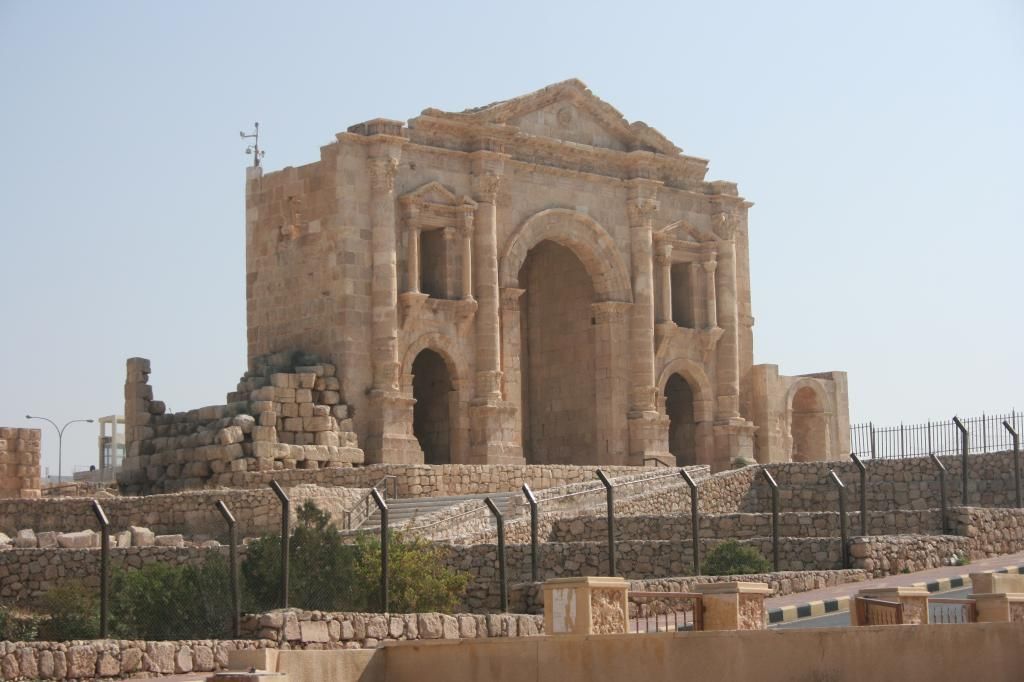
Still to the south of the city, but between it and Hadrian's Arch is the hippodrome. This is one of the smallest hippodromes in the Roman Empire, seating only 15,000 in contrast to Rome's Circus Maximus which held 157,000, but it has the distinction of being a working facility. A company called RACE (Roman Arny and Chariot Experiences), conducts chariot races there throughout the year. Unfortunately, their next show would be Sunday at 11:15, so I didn't get the opportunity to see some old time racin'. That would have been cool. Here's a view of the stands:
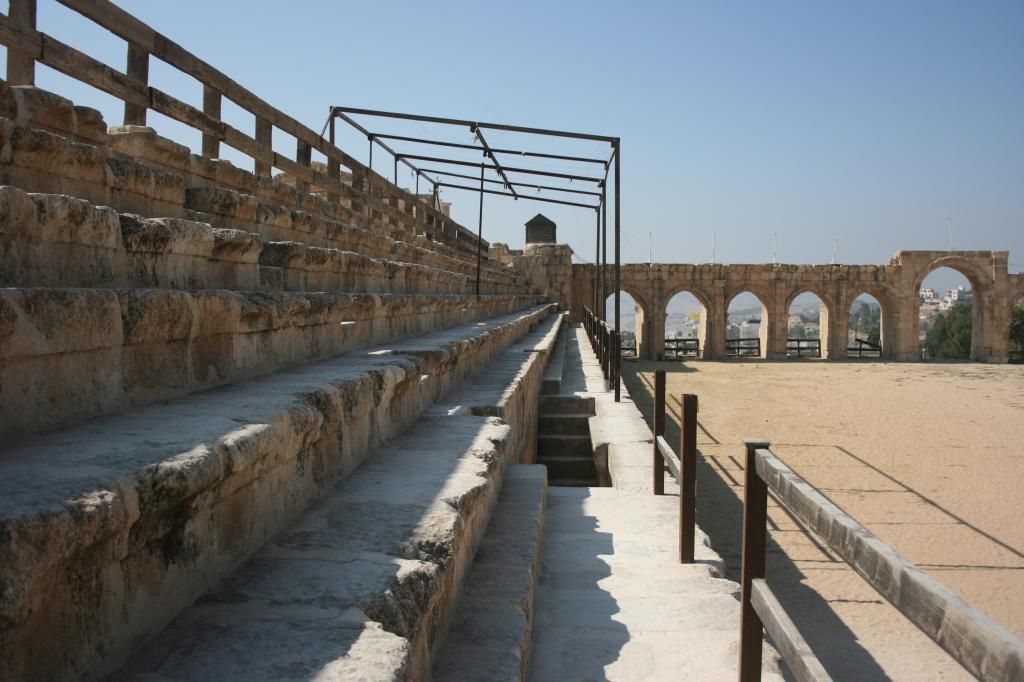
And a view of the track from the stands:
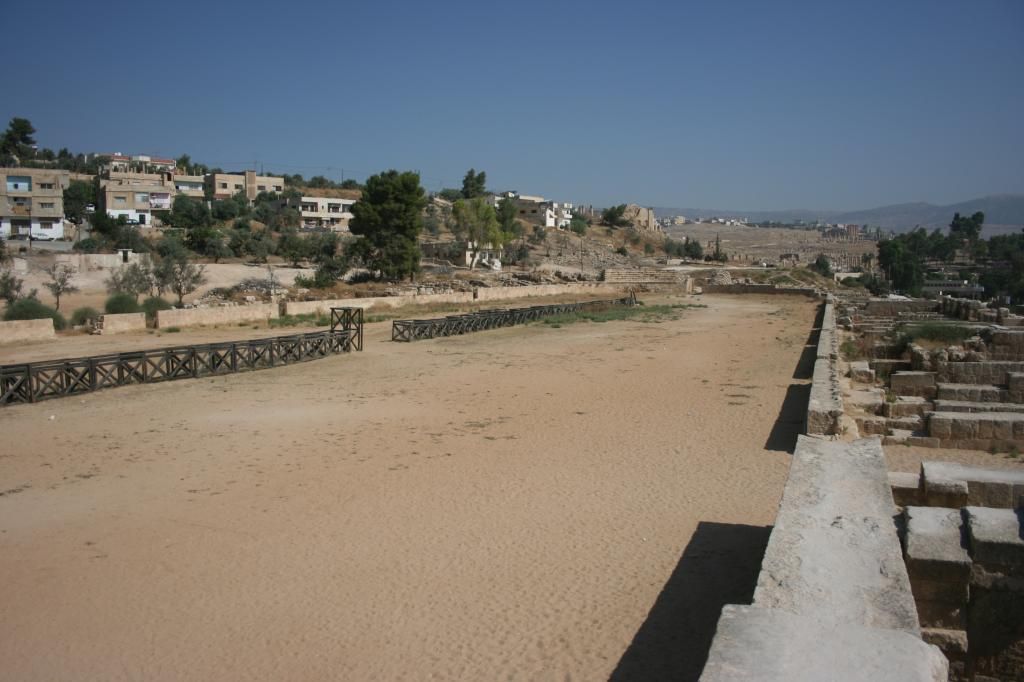
The folks in the houses to the west of the track get to see old time racin' all year round. How cool is that!
The horse stables are just below the grandstands and are made, just like everything else in the area, out of stone. Nice arch work!

Just before you enter the South Gate of Jerash proper, you come to the Visitor Center. There are some maps and explanatory details about Jerash in there. One large three-part banner illustrates Gerasa's (the ancient name for Jerash) membership in the Decapolis. During the time when the Greek's held sway here thanks to Alexander the Great there was a loose confederation of 10 cities (Decapolis is Greek for ten (deca) cities (polis)) and Gerasa was one of those. The Decapolis is referenced in the Bible.
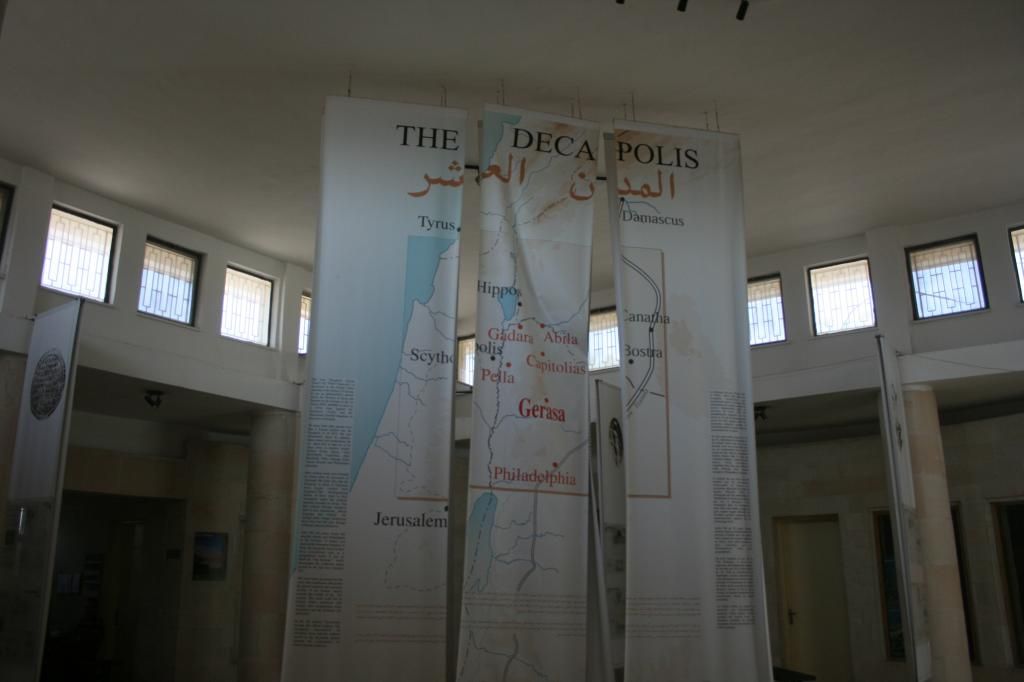
The south end of Jerash is dominated by two large structures that can be seen from most of the town, the Temple of Zeus and the South Theater. The two major temples in Jerash, one to Zeus and the other to Artemis, occupy the highest points of land in the city. The view from the Temple of Zeus is fabulous and gives you a great look at the Roman plan of Jerash.

The Romans were fanatics for order and builders of extreme skill. Scattered all over the Mediterranean basin are civil projects they built almost 2,000 years ago that are still standing today. Most Roman towns were laid out in the same fashion. The main road through town, the Cardo, runs on a north-south axis and major side streets, the Decumanus (Decumani?), run east-west. The plaza at the base of the hill where the South Theater and the Temple of Zeus are located is called the Oval Plaza for pretty obvious reasons. The collonades surrounding it reminded me very strongly of St. Peter's Square in Vatican City. In the upper left of the picture you can see the Temple of Artemis on the highest hill in town. There are much better pictures of that coming up. Between the Oval Plaza and the temple you can see that the restoration of Jerash is still a work in progress. You can see piles of stone like that all around the town, just waiting for the right folks to come along and solve the puzzle of how to put it all back together.
Jerash has suffered many earthquakes over the years and a particularly devastating one in 749. These columns from the Temple of Zeus fell then and have lain there ever since.

Toward the top of the picture is a construction crane that's being used in the rebuilding effort. I wonder what the Romans would have built if the had diesel/hydraulic cranes to lift all of that stone. It's a wonder that they accomplished all they did using the relatively primitve tech that they had.
The South Theater is right next door to the Temple of Zeus and is the largest of three theaters in Jerash, seating around 3,000 folks. It was built around 90 AD and still looks pretty good.

Walking down the hill from the theater/temple complex, you enter the Oval Plaza. I love the way they laid the paving stones in the same oval pattern.
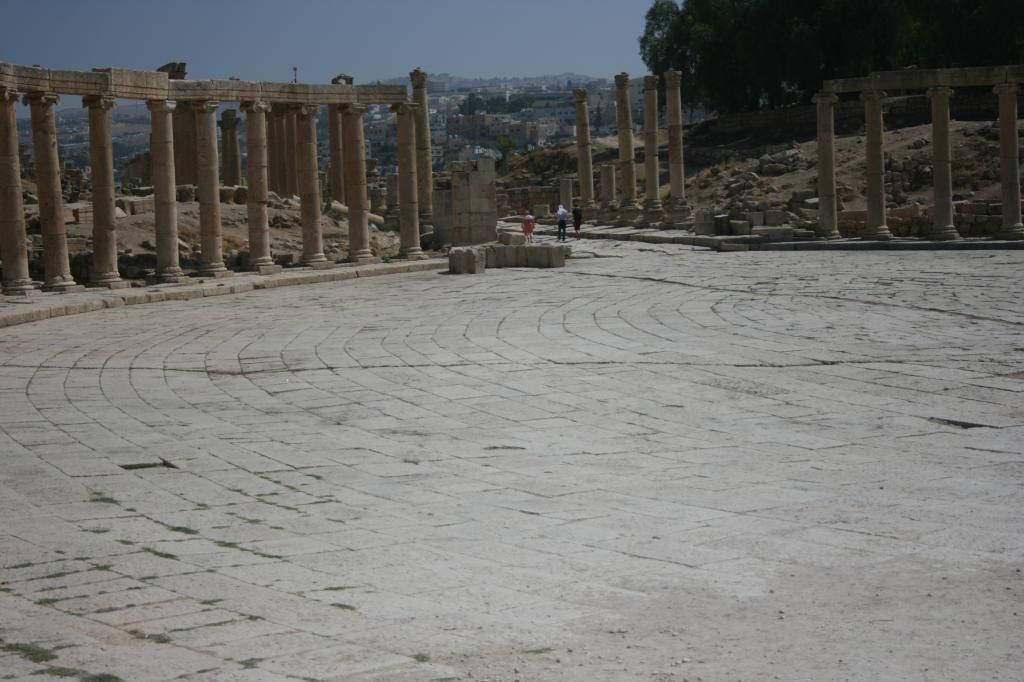
This view is from the center of the plaza looking north up the Cardo.
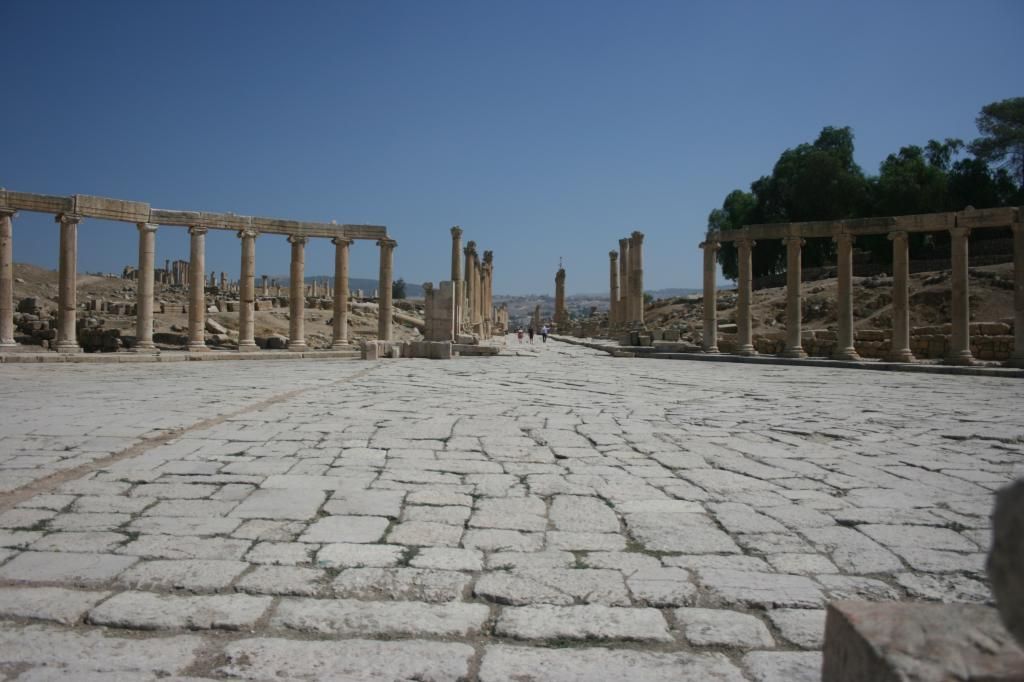
To the east of the Oval Plaza perched on a hill surrounded by trees is a small museum. I took a detour there to look at the artifacts they preserved there. The museum is really just one large room with display cases set all around it. They have representative pieces from all of the eras of occupation, beginning with the Paleolithic. They had a decent collection of flaked tools and some nice explanations of how they were made and what modern tools they correspond to.
One of the cases contained an amazing collection of intact Roman glassware. Knowing that some of my faithful readers are fond of Roman glass jewelry, I just had to include the next two shots.

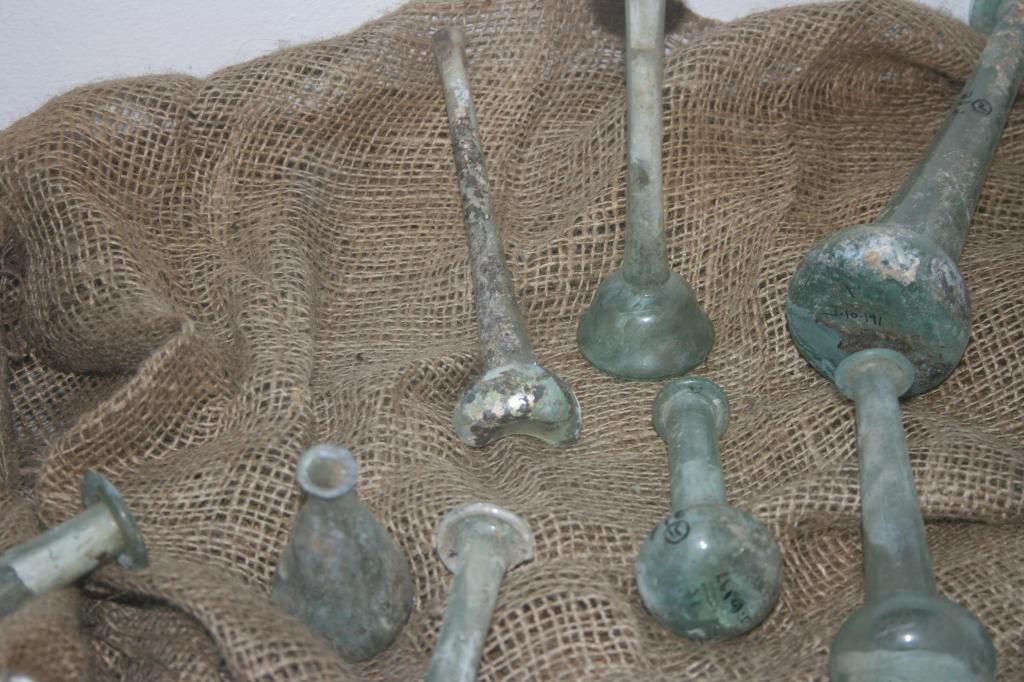
On one wall they had a couple of representative mosaics from the 500-700 AD period. I liked this one for the sense of movement they were able to capture.
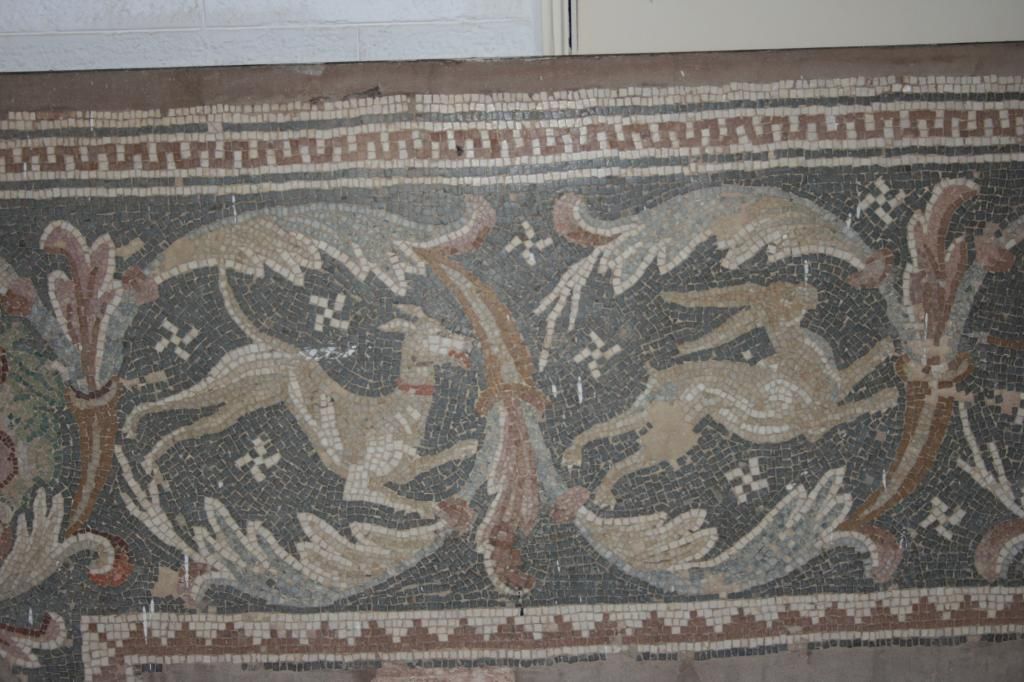
Back on the Cardo, I continued north to the first major intersection, the South Tetrapylon. This is a view looking west up the South Decumanus.
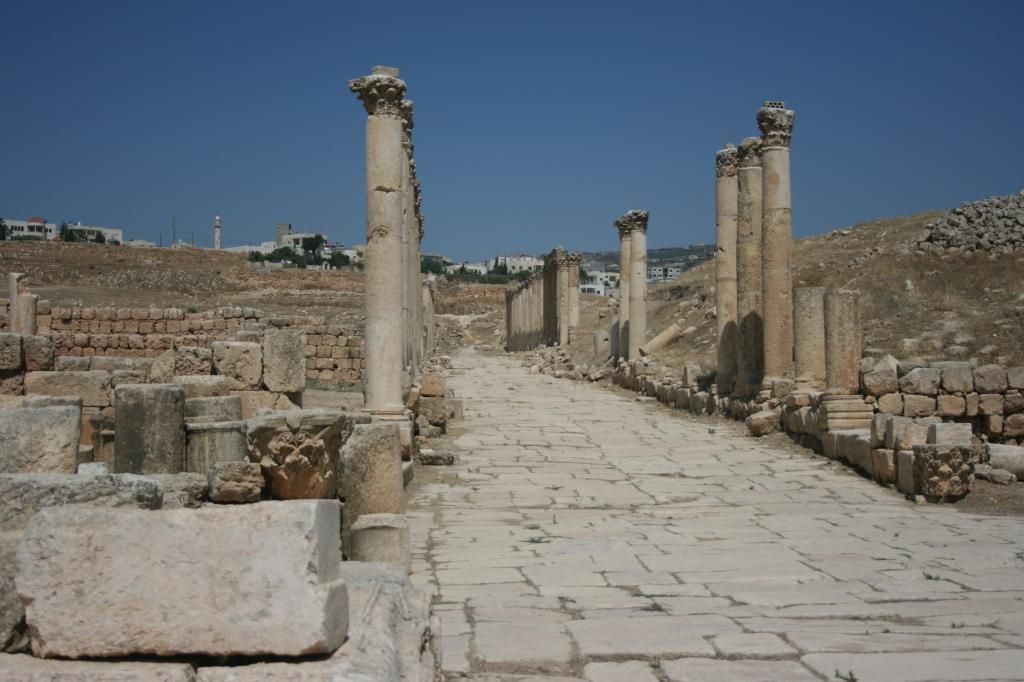
Further up the Cardo you come upon a collection of churches from the Byzantine era. At the top of this staircase is what they call the Cathedral, though they are really not sure if it was a cathedral or not. I didn't go up these stairs.
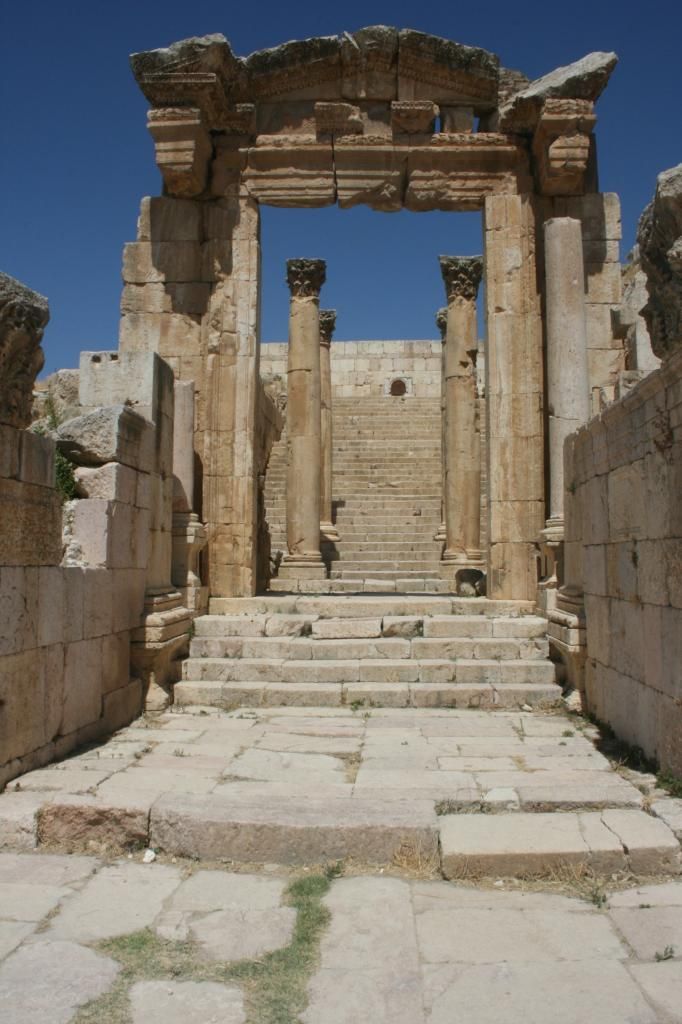
As I sat in the shade taking a break and a drink from my trusty Hydroflask, I noticed this lizard. I've always enjoyed looking at the wildlife that an area has to offer. Most of the wildlife in Jordan seems to be rather small. Most of what I've seen has been limited to birds, insects and lizards so far.
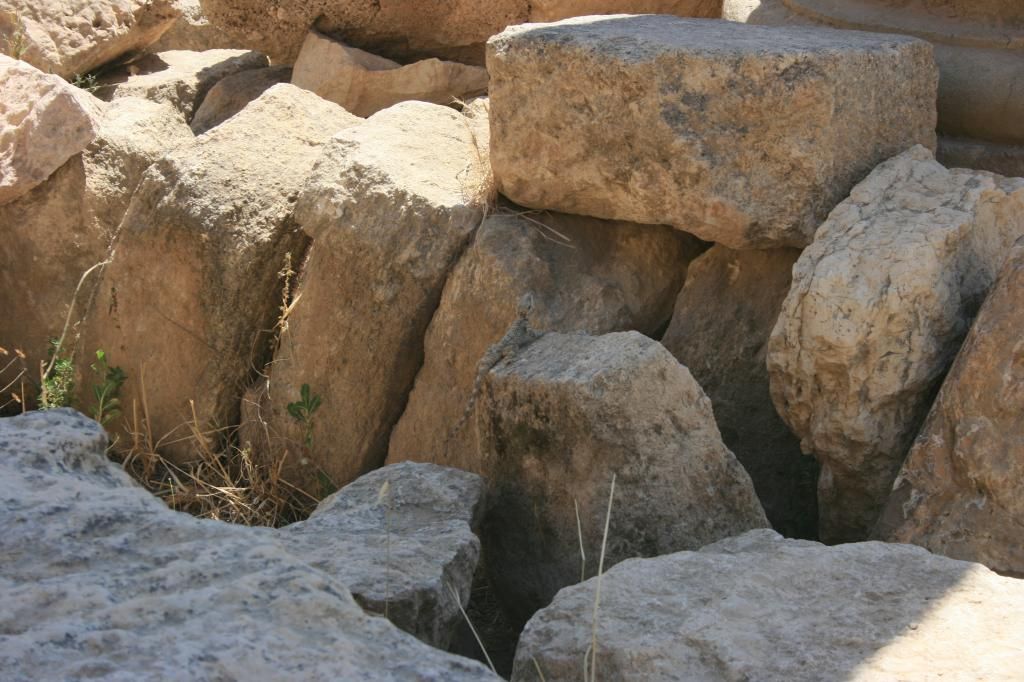
I did climb the stairs of this monumental staircase; seven sets of seven stairs each. What I found at the top was well worth the climb.

This is the Temple of Artemis, daughter of Zeus and goddess of forests, protector of women and bringer of fertility to all creatures.

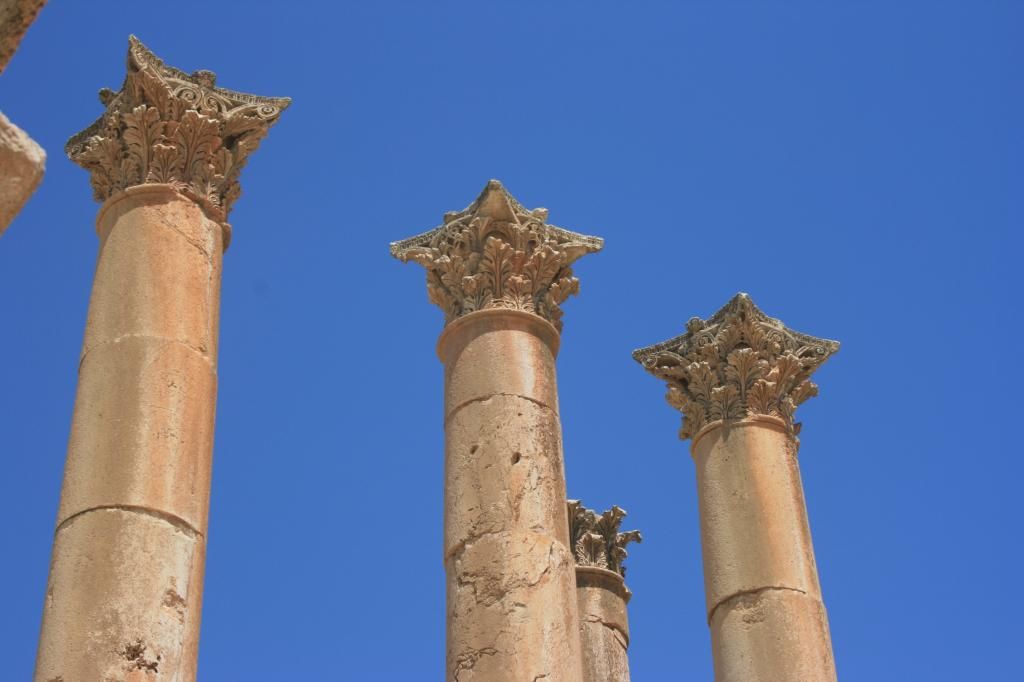
I made the climb all the way up into the temple and took this shot looking east from the niche where the image of Artemis resided many years ago.
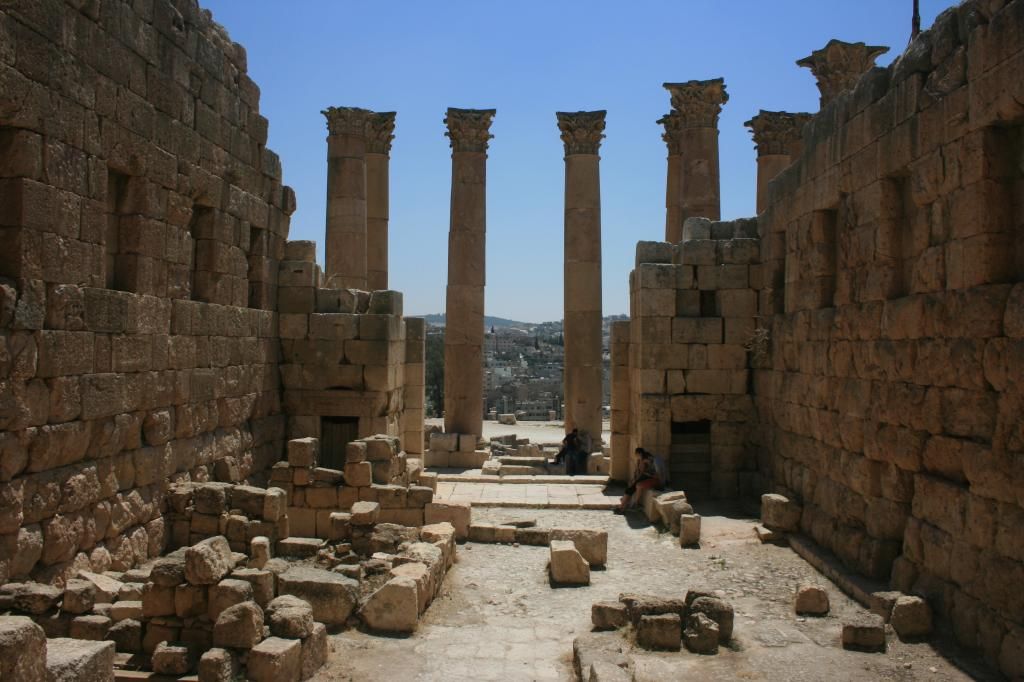
Before I left the Artemis complex, I took a look to the south and got a great perspective of the South Theater.and the Temple of Zeus to the left. You can see part of the collonade that surrounds the Oval Plaza in the lower left.
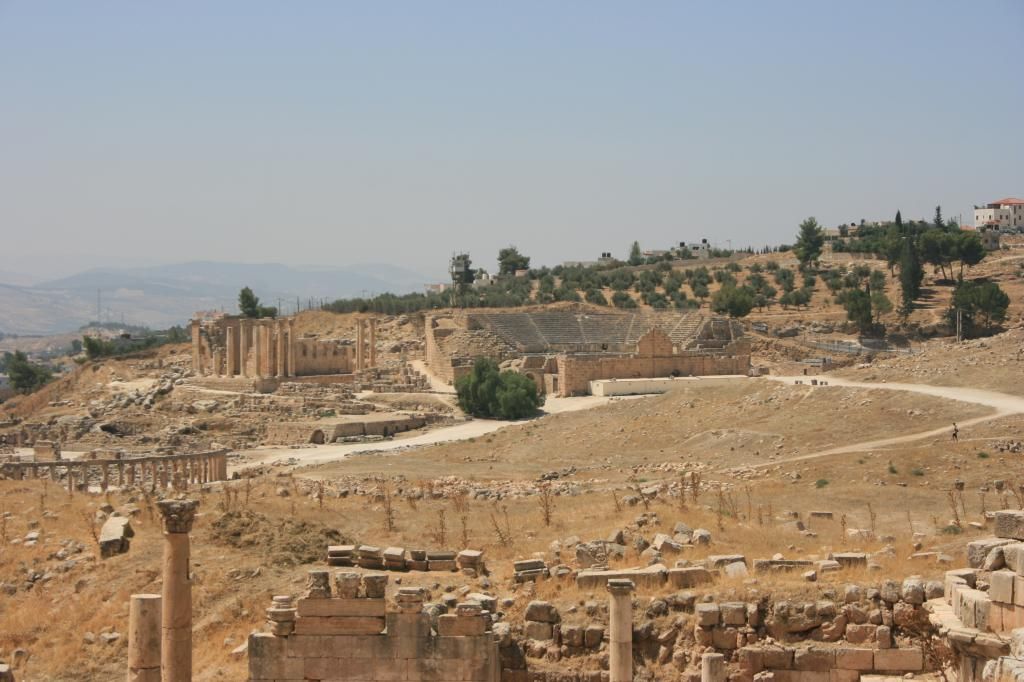
This post, like the Petra post, got too big, so I had to cut it in half. This time I was a bit smarter about it and cut the first part out so that you could read them in order more easily. The story continues in International Adventures: Visit to Jerash, Part 2.
No comments:
Post a Comment